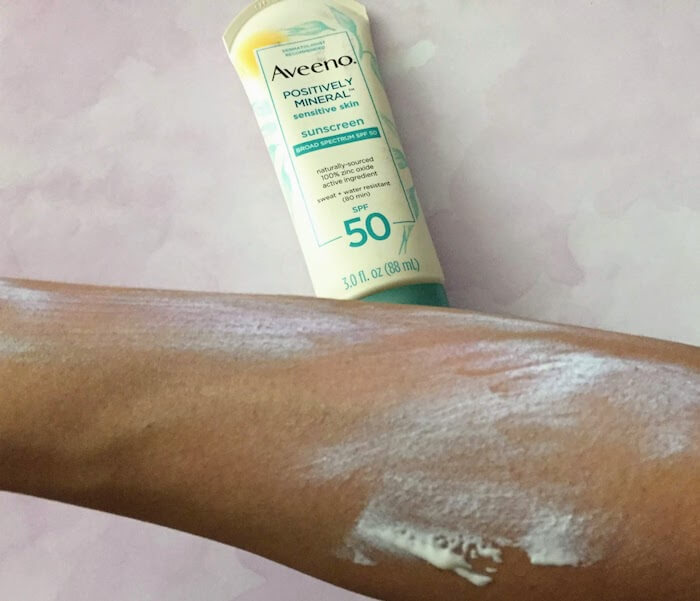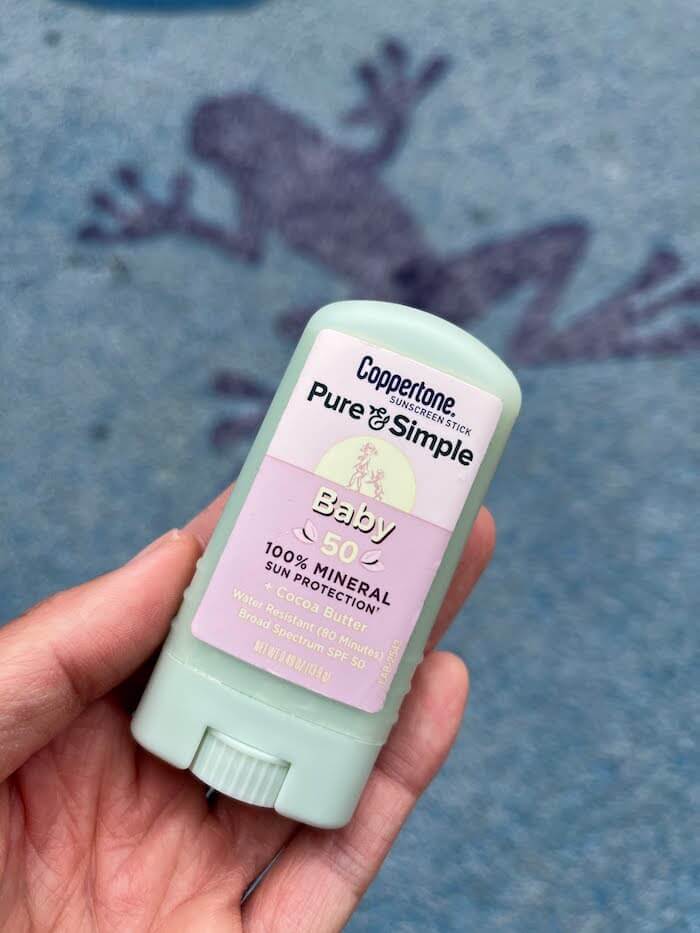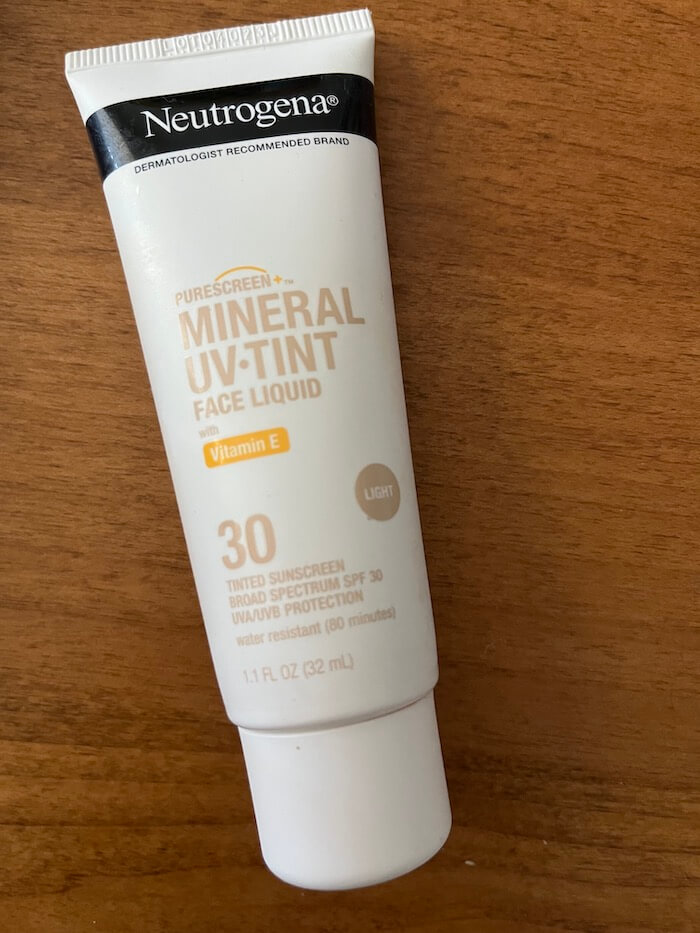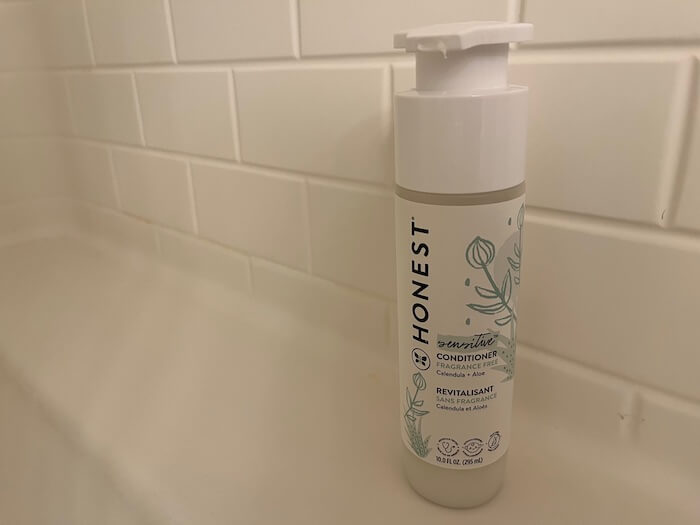Aveeno Positively Mineral Sunscreen SPF 50 review
This SPF 50 physical sunscreen is very similar to Neutrogena's Sheer Zinc Sunscreen—both contain exactly 21.6% zinc oxide and oats to soothe sensitive skin.
I love trying zinc oxide sunscreens. Over the course of 2019, I’ve tried quite a few, including: Bare Republic Face Sunscreen SPF 30, All Good Sunscreen Butter SPF 50+, Coppertone Pure & Simple Sunscreen SPF 50, Badger Clear Zinc Mineral Sunscreen SPF 30, Hawaiian Sol SPF 50 Reef Safe Sunscreen. And that’s just listing the solely zinc oxide-based ones. I’ve also tried other physical sunscreens that contain a mixture of zinc oxide and titanium dioxide.
Two drugstore name brands that manufacture strikingly similar zinc oxide-based sunscreens are Neutrogena Sheer Zinc Sunscreen SPF 50 and Aveeno Positively Mineral Sunscreen SPF 50. Both of these sunscreens list the exact same percentage of zinc oxide (21.6%), and both are fragrance-free, formulated for sensitive skin, non-comedogenic, and water-resistant for up to 80 minutes. Since I have sensitive skin, I was eager to try one or both of these sunscreens, but I wasn’t sure which one to pick first. In the end, I decided to try Aveeno’s product. In this post, I’ll compare these two products' ingredient lists, get my dad’s thoughts on these two products, and then share my review of Aveeno Positively Mineral Sunscreen SPF 50.
Neutrogena Sheer Zinc Sunscreen Broad Spectrum SPF 50 ingredients
Aveeno Positively Mineral Sunscreen SPF 50 ingredients
Active ingredient: zinc oxide (21.6%)
Inactive ingredients: water, c12-15 alkyl benzoate, styrene/acrylates copolymer, octyldodecyl citrate crosspolymer, phenyl trimethicone, cetyl peg/ppg-10/1 dimethicone, dimethicone, polyhydroxystearic acid, glycerin, ethyl methicone, silica, cetyl dimethicone, triethoxycaprylylsilane, phenoxyethanol, glyceryl behenate, sodium chloride, acrylates/dimethicone copolymer, chlorphenesin, phenethyl alcohol, avena sativa (oat) kernel flour, caprylyl glycol, cetyl dimethicone/bis-vinyldimethicone crosspolymer, chrysanthemum parthenium (feverfew) flower/leaf/stem juice
Neutrogena Sheer Zinc Face Dry Touch Sunscreen vs. Aveeno Positively Mineral Sunscreen ingredient comparison
Below, I’ve summarized the main similarities and differences in these two products' ingredient lists.
Ingredients in both products:
sodium chloride, phenyl trimethicone, cetyl dimethicone, glyceryl behenate, dimethicone, zinc oxide, phenoxyethanol, ethyl methicone, octyldodecyl citrate crosspolymer, water, glycerin, phenethyl alcohol, caprylyl glycol, acrylates/dimethicone copolymer, cetyl dimethicone/bis-vinyldimethicone crosspolymer, styrene/acrylates copolymer, silica, polyhydroxystearic acid, cetyl peg/ppg-10/1 dimethicone, chrysanthemum parthenium (feverfew) flower/leaf/stem juice, c12-15 alkyl benzoate
Ingredients in Aveeno but not in Neutrogena
triethoxycaprylylsilane, avena sativa (oat) kernel flour, chlorphenesin
Ingredients in Neutrogena that are missing in Aveeno:
colloidal oatmeal, tocopheryl acetate, chlorphenes
Hidden similarities
Interestingly, both of these sunscreens contain some sort of oat-based product, perhaps because they’re both marketed for sensitive skin. Colloidal oatmeal is commonly used in eczema products because it is known to soothe itchy, inflamed skin.
Aveeno lists oat kernel flour as a key ingredient in this sunscreen, stating that it helps “replenish skin’s natural barrier.” Read more about it here. Colloidal oatmeal and oat kernel flour are effectively the same thing: ground up oats.
Chlorphenesin and chlorphenes are basically the same as well—both are preservatives. This means that these two sunscreens are even more similar than they appear.
Main similarities
Both sunscreens contain 21.6% zinc oxide as an active ingredient. Both also state that they are:
- Water-resistant for up to 80 minutes
- Non-comedogenic
- Fragrance-free and developed for sensitive skin
I was curious to see if my dad had any recommendations for which of these two sunscreens to choose, since they seem so similar at first glance. Here’s what he had to say.
My Dad the Chemist’s review of Neutrogena vs. Aveeno Zinc Sunscreen SPF 50
Dear Emily, they’re the same formula except Aveeno brand always add oat flour into the formula, I would just choose the one with lower price, usually the Neutrogena is slightly lower.
Love, Dad
As my dad noted, Aveeno has doubled down on oat flour as a main ingredient in many of its products, including the Aveeno Moisturizing Bar for Dry Skin I reviewed a few months ago.
Aveeno Positively Mineral Sunscreen SPF 50 review
I want to try out both of these products someday, but I decided to start with Aveeno first because of this pamphlet about UVA and UVB protection. According to this resource, in a clinical trial, this sunscreen was more effective at blocking UVA rays than other mineral sunscreens like Blue Lizard SPF 30+, CeraVe SPF 50 Face (active ingredients: 9% titanium dioxide and 7% zinc oxide), and CeraVe SPF 50 (active ingredients: 9% titanium dioxide and 7% zinc oxide).
Interestingly, CeraVe SPF 50 Face performed slightly better than CeraVe SPF 50 sunscreen in this particular trial. Also, Blue Lizard beat out both CeraVe products even though it’s SPF 30+ as opposed to SPF 50. Remember, SPF only measures a product’s protection against UVB rays, not UVA rays.
It’s nice to see that Aveeno has shared data about this product’s UVA protection factor, since it can’t actually list a UVAPF number on the label. You can see that Neutrogena Sheer Zinc Face Dry Touch Sunscreen was not listed in this pamphlet, perhaps because it offers similar protection to Aveeno’s Positively Mineral Sunscreen, and Aveeno only wanted to feature sunscreens that didn’t perform as well as this particular product. Just a guess.

On the plus side, this product does not contain any irritating fragrances and is not overly oily. And it provides decent UVA protection (according to Aveeno’s clinical trial), if that’s something you care about. But if you’re looking for a cosmetically elegant sunscreen that blends perfectly into your skin, Aveeno Positively Mineral Sunscreen SPF 50 is not going to do you any favors. If you can tell from the picture above, this is your typical thick, pasty zinc sunscreen. It does eventually rub in decently, though it leaves behind a medium white cast. It’s nice that it’s fragrance-free, but I thought it had an unattractive chemical-like odor (a strange mix of baby powder scent and fish odor), probably due to the natural odor of one or more of the ingredients in the formula.
Because of the significant white cast, I’ve been using this sunscreen when I go running, since it doesn’t look as weird to have a ghostly complexion when you’re just exercising. It’s also sweat/water-resistant for up to 80 minutes.
One last downside of this sunscreen: It’s a bit challenging to remove. However, this is typically the case with every zinc oxide sunscreen I’ve tried in the past, so Aveeno is not the only one guilty of this crime. This sunscreen leaves behind a waxy residue that’s hard to dissolve. You need to use some sort of oil cleanser or makeup remover to get it all off. I’m curious to see if Neutrogena’s formula has the same downsides as this product, including the weird smell. I’ll let you know what happens when I finally try that one out.




Share this post
RSS
Facebook
Reddit
Email